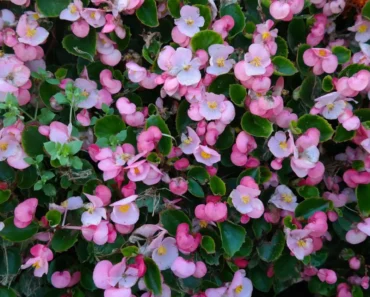The Alligator Plant, scientifically known as Kalanchoe daigremontiana and famously called Mother of Thousands, is renowned for its incredibly easy and unique propagation method. This comprehensive guide provides everything you need to know to successfully multiply your Alligator Plant using its signature plantlets and other proven techniques.

Table of Contents
Alligator Plant Propagation: Quick Guide to Kalanchoe daigremontiana
Key Propagation Facts:
- Primary Method: Harvesting and planting the numerous plantlets (bulbils) that form along its leaf margins – this is its most prolific and defining trait
- Ease Level: Extremely easy, often propagates itself without intervention
- Other Methods: Stem cuttings (less common but possible for larger plants), leaf cuttings (less effective for this species)
- Scientific Name: Kalanchoe daigremontiana (syn. Bryophyllum daigremontianum)
- Common Names: Mother of Thousands, Mexican Hat Plant, Devil’s Backbone
- Success Rate: Nearly 100% with proper technique
The Magic of Mother of Thousands: Why Alligator Plant Propagation is So Unique
What are Those Tiny Plants on the Leaves? Understanding Plantlets (Bulbils)
The Alligator Plant’s most fascinating feature is its ability to produce tiny, fully-formed plantlets along the serrated edges of its leaves. This remarkable process, called vivipary, allows the plant to create complete miniature versions of itself while still attached to the parent plant.
These plantlets develop:
- Tiny roots even before detaching from the parent leaf
- Small leaves that mirror the adult plant’s structure
- Independent root systems ready for immediate planting
- Natural detachment when mature enough to survive on their own
The Evolutionary Advantage: Prolific Self-Propagation
This unique propagation strategy gives the Alligator Plant several survival advantages:
| Advantage | Benefit |
|---|---|
| Rapid multiplication | One plant can produce hundreds of offspring annually |
| Drought resilience | Plantlets can survive periods without water using stored energy |
| Colonization ability | Plantlets naturally fall and establish new colonies |
| Genetic consistency | Clonal reproduction ensures successful traits are preserved |
Step-by-Step: Propagating Alligator Plants from Plantlets
Step 1: Identifying Ready Plantlets
Look for plantlets that show these signs of readiness:
- Visible white root nubs emerging from the base
- Easy detachment when gently touched
- Healthy green coloration without brown or mushy spots
- Size of 0.5-1 inch with at least 2-4 tiny leaves
Pro Tip: Mature plantlets often detach naturally and can be found around the base of your parent plant.
Step 2: Harvesting the Plantlets
The harvesting process is remarkably simple:
Gentle Collection Method:
- Lightly brush your finger along the leaf margins
- Collect fallen plantlets from around the plant base
- Gently twist off any remaining attached plantlets
- Place collected plantlets in a shallow dish
Important: Handle plantlets carefully as their tiny roots are delicate during this stage.
Step 3: Preparing Your Potting Mix
Create the ideal growing environment with this proven recipe:
Optimal Soil Mix:
- 50% quality cactus/succulent potting mix
- 25% perlite for drainage
- 25% coarse sand or pumice
- Optional: Small amount of worm castings for nutrition
Container Selection:
- Use shallow trays or 4-inch pots
- Ensure drainage holes are present
- Terra cotta pots work excellently for moisture control
Step 4: Planting the Plantlets
The planting process couldn’t be easier:
- Fill containers with prepared soil mix
- Moisten soil lightly – it should be barely damp
- Place plantlets on surface – don’t bury them deeply
- Gently press plantlets to ensure soil contact
- Space plantlets 1-2 inches apart to prevent overcrowding
“The beauty of alligator plant propagation lies in its simplicity – these plantlets are designed by nature to succeed with minimal intervention.” – Master Gardener Sarah Chen
Step 5: Initial Care for New Plantlets
Lighting Requirements:
- Provide bright, indirect sunlight
- Avoid direct afternoon sun which can scorch tender plantlets
- East-facing windows work perfectly
- Supplement with grow lights if needed
Watering Schedule:
- Week 1-2: Light misting every 2-3 days
- Week 3-4: Transition to bottom watering when soil surface dries
- Month 2+: Water deeply but infrequently, allowing soil to dry between waterings
Expected Timeline:
- Days 3-7: Initial root development strengthens
- Week 2-3: New leaf growth appears
- Month 1-2: Well-established plants ready for individual pots
Beyond Plantlets: Other Ways to Propagate Alligator Plants
Propagating Alligator Plants from Stem Cuttings
While plantlet propagation is preferred, stem cuttings work well for:
- Rescuing damaged plants with healthy stem sections
- Managing overgrown specimens that need pruning
- Creating larger starter plants more quickly
Stem Cutting Process:
- Select healthy 4-6 inch stem sections
- Allow cut ends to callous for 2-3 days
- Plant in well-draining succulent mix
- Water sparingly until roots establish (3-4 weeks)
Can You Propagate Alligator Plants from Leaf Cuttings?
While many Kalanchoe species propagate readily from leaf cuttings, the Alligator Plant is less reliable with this method. Here’s why:
Challenges with Leaf Propagation:
- Lower success rates compared to plantlets (30-40% vs 95%+)
- Longer development time (8-12 weeks vs 2-4 weeks)
- Inconsistent results even with perfect conditions
- Energy better invested in the plant’s natural plantlet production
When to Try Leaf Cuttings:
- As a backup method if plantlets aren’t available
- For experimental purposes or learning
- When trying to preserve rare varieties
Caring for Young Alligator Plants: From Plantlet to Thriving Succulent
Light Management as Plants Mature
Growth Stage Lighting Needs:
- Seedling (0-1 month): Bright indirect light, 4-6 hours daily
- Juvenile (1-3 months): Gradually increase direct morning sun
- Mature (3+ months): Full sun to partial shade, 6+ hours daily
Watering Evolution
Your watering approach should evolve with plant maturity:
| Plant Age | Watering Frequency | Method | Signs to Watch |
|---|---|---|---|
| 0-1 month | Every 2-3 days | Light misting | Soil surface moisture |
| 1-3 months | Weekly | Bottom watering | Soil dry 1 inch down |
| 3+ months | Bi-weekly | Deep soaking | Soil dry throughout pot |
Repotting Timeline
When to Repot:
- First repot: 2-3 months after propagation
- Subsequent repots: Every 12-18 months or when rootbound
- Container size: Increase pot diameter by 1-2 inches each time
Alligator Plant Propagation Problems & Solutions
Common Issues and Fixes
Problem: Plantlets Not Rooting
- Cause: Soil too dry or too wet
- Solution: Maintain consistent light moisture, not soggy
- Prevention: Use well-draining soil mix with proper watering schedule
Problem: Rotting Plantlets
- Cause: Overwatering or poor drainage
- Solution: Reduce watering frequency, improve soil drainage
- Prevention: Allow soil to dry between waterings
Problem: Leggy Growth
- Cause: Insufficient light
- Solution: Move to brighter location or add grow lights
- Prevention: Provide adequate light from the start
Problem: Pest Issues on Young Plants
- Common pests: Aphids, spider mites, mealybugs
- Solution: Gentle insecticidal soap spray or neem oil
- Prevention: Maintain good air circulation and inspect regularly
A Word of Caution: Managing the Abundance of Alligator Plants
Understanding the Invasive Potential
The Alligator Plant’s incredible propagation ability comes with responsibility:
Invasive Characteristics:
- Plantlets can establish in minimal soil
- Tolerates various environmental conditions
- Rapid population growth in suitable climates
- Difficult to completely remove once established
Responsible Growing Practices
Indoor Management:
- Place trays under plants to catch falling plantlets
- Regularly collect and dispose of unwanted plantlets
- Consider growing in enclosed spaces like terrariums
Outdoor Considerations:
- Check local regulations before outdoor planting
- Use containers rather than ground planting in mild climates
- Never dispose of plant material in natural areas
- Share excess plants with other gardeners rather than discarding
Disposal Best Practices:
- Dry plantlets completely before composting
- Bag and dispose in regular trash if composting isn’t available
- Never dump plant material in wild areas
Your Alligator Plant Propagation Questions Answered (FAQ)
How long does it take for Alligator Plant plantlets to root?
Most plantlets develop strong roots within 1-2 weeks when provided with proper light moisture and indirect sunlight. You’ll see visible root development and new leaf growth within the first month.
Do I need rooting hormone for Alligator Plant propagation?
No, rooting hormone is unnecessary for plantlet propagation. The plantlets naturally develop roots while attached to the parent plant. For stem cuttings, rooting hormone can help but isn’t essential.
Can I propagate Alligator Plant in water?
While possible, water propagation isn’t recommended for Alligator Plants. These succulents prefer well-draining conditions, and water propagation can lead to weak root systems and increased rot risk.
Why is my Alligator Plant not producing plantlets?
Several factors can affect plantlet production:
- Age: Young plants (under 1 year) produce fewer plantlets
- Light: Insufficient light reduces plantlet development
- Season: Production peaks in spring and summer
- Health: Stressed or unhealthy plants divert energy from reproduction
Is Alligator Plant poisonous?
Yes, all parts of the Alligator Plant are toxic if ingested by humans, pets, or livestock. The plant contains cardiac glycosides that can cause serious health issues. Always wash hands after handling and keep away from children and pets.
What’s the difference between Mother of Thousands and Mother of Millions?
- Mother of Thousands (K. daigremontiana): Produces plantlets along leaf margins, broader leaves
- Mother of Millions (K. delagoensis): Produces plantlets at leaf tips, narrower cylindrical leaves Both species propagate similarly but have distinct appearance and growth patterns.
Propagating Alligator Plants: A Rewarding and Simple Endeavor
The remarkable ease of alligator plant propagation makes it one of the most rewarding succulents for both beginners and experienced gardeners. By harnessing the plant’s natural plantlet production, you can create an endless supply of new plants while enjoying the fascinating process of vivipary in action.
Remember these key principles for success:
- Work with nature – let the plantlets mature naturally before harvesting
- Provide proper conditions – bright indirect light and well-draining soil
- Practice responsible growing – manage abundance and prevent invasive spread
- Be patient – allow time for proper root establishment
Whether you’re expanding your own collection, sharing with friends, or exploring the wonders of plant propagation, the Alligator Plant offers an unmatched combination of ease, success, and natural fascination.
Ready to start your propagation journey? Share your Alligator Plant propagation successes or questions in the comments below! We’d love to see your new plant babies and help troubleshoot any challenges you encounter along the way.
Author
George Wine is a seasoned gardening expert with over 20 years of experience in the field of horticulture. His passion for plants and nature has driven his career, where he has honed his skills in various aspects of gardening, from landscape design to plant care. George holds a Master of Science in Horticulture from the University of California, Davis (UC Davis), a prestigious institution known for its research and advancements in plant science.
Throughout his career, George has worked with a diverse range of clients, offering tailored solutions to enhance outdoor spaces and create thriving gardens. His knowledge and expertise allow him to provide invaluable advice, ensuring that both novice and experienced gardeners achieve their gardening goals. Whether you’re looking for tips on sustainable gardening practices, innovative design ideas, or advice on specific plant species, George is here to help you cultivate the garden of your dreams.






